It is easier to prevent osteochondrosis than to treat it for a long time. Prevention includes adherence to body posture, fitness exercise, exercise equipment, racing, yoga, swimming. You need to sit properly at the desk and computer, you can not turn your body backwards for long periods of time or lean while lifting weights. When writing or reading, it is not recommended to bend over the table surface, and during sleep it is recommended to use orthopedic pillows.
Osteochondrosis manifests itself with unpleasant symptoms. Patients complain of pain in the spine, body aches and numbness in the arms or legs for no reason. In some cases, there may be frequent loss of consciousness or dizziness. If the disease is not treated, it gradually leads to atrophy of muscle tissue, disorders of nerve impulses, dysfunction of a number of internal organs.
The cause of the onset of the disease is hidden in the passive lifestyle, lack of adequate load on the spine and developing skeletal muscles. Equivalent factors are also unhealthy diet, hormonal disorders, body posture problems, inadequate fluid intake, hereditary predisposition, infection, obesity and bad habits.
Treatment of osteochondrosis at home is possible if the patient does not use folk remedies as the only therapy and has consulted a doctor about the complex effects on the pathology. The main way to get rid of the problem is:
- Drug therapy.
- Massage and physiotherapy.
- Gymnastics.
- Traditional medicine.
It is impossible to cure osteochondrosis quickly, because the affected cartilage tissue regenerates slowly. It takes at least three months to complete the complex steps, and will take about a year for the recovery period. The outcome of treatment obtained is highly dependent on the patient himself, his perseverance in observing the prescription, as well as the stage of disease progression.
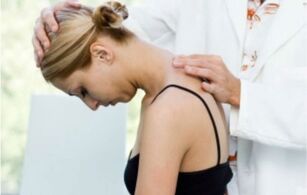
Do you know why your spine hurts? It is almost impossible to say with certainty that the development of the disease begins due to improper nutrition or blood stagnation, therefore, for effective therapy, an entire program is needed, which aims to restore blood flow to the damaged disc.
Next, we will briefly discuss the methods of treating osteochondrosis at home. We have discussed some of them in more detail: below, in the description of the method, see the article at the link.
- Diet. Often the cause of osteochondrosis is a blood flow disorder due to cholesterol accumulation and loss of vascular elasticity. Eliminating fatty foods from foods, as well as cholesterol-rich foods, such as chicken eggs, broth, pork and chicken skin, will help improve the condition. Alcohol can play an important role in vascular activity, as well as non-alcoholic beverages - regular coffee and tea. Regular intake of nicotine into the body also causes vasospasm. The results are unclear: if you are being treated for osteochondrosis, you should completely abandon bad habits and lead a healthy lifestyle.
- Restoration of blood circulation in the area of pathological processes is the most important condition for treating osteochondrosis at home. There are many ways: from physiotherapy training to rubbing and compressing, but you have to pick a few and act.
- Orthopedic sleeping supplies. The spine is the axis of the human body, which throughout the day experiences a dynamic load when moving and static when sitting. But, like other parts of the body, he needs proper rest, which can only be given by proper position during sleep. Quality orthopedic mattresses and pillows make ideal conditions for normal blood circulation while you sleep and rest.

Osteochondrosis is a disease that attacks the spine, or rather, the intervertebral disc. With its development, the soft elements of the disc are damaged and oxidized, and the vertebrae begin to come in contact with each other, pressing on the blood vessels and nerve fibers located nearby.
Cervical osteochondrosis is one of the most common types of spinal lesions that can occur in the elderly and those around 20 years of age.
In the process of development of this disease, experts distinguish 4 stages:
- Level I. At this stage, there is a transfer of the intervertebral disc, a violation of its stability. In this case, a person may feel muscle tension in the affected area and slight pain. Due to the mild symptoms, as a rule, this level is almost invisible.
- Phase II. Destruction of the annulus fibrosus begins, the distance between the vertebrae decreases. Symptoms are pain that is localized at certain points and exacerbated by bending or turning the head. Also at this stage, an increase in fatigue may appear.
- Phase III. The fibrous ring is completely destroyed, a hernia is formed. In this case, the spinal space is deformed, the pain becomes stronger. To reduce discomfort, one has to restrict movement. The obvious signs are dizziness, frequent fatigue.
- Phase IV. This stage is characterized by a state of complete immobilization of the damaged spinal area. Periodically, the pain may go away, but then it will definitely return, increasing several times.
The earlier cervical osteochondrosis begins, the stronger the complications that may occur. If the disease occurs at a young age, the following are possible consequences:
- herniated intervertebral disc;
- cervical root radiculopathy;
- intervertebral protrusion in the cervical region (protrusion);
- cervicalgia vertebra, etc.
Also, in the case of advanced osteochondrosis, problems with the vertebral arteries, the development of paresis and concomitant diseases are possible.
The main symptom of osteochondrosis is back pain. There may also be numbness in the limbs. Pain can increase with movement. Patients may also complain of headaches, dizziness, pain in internal organs.
First sign
Cervical osteochondrosis at the onset of the disease may not appear at all. The disease makes him feel neglected with frequent headaches and neck pain while moving. When there is a violation of cerebral circulation with cervical osteochondrosis, a person experiences the following symptoms:
- common headaches;
- violation of facial muscle sensitivity;
- increased fatigue;
- sound in the head;
- rings in the ear;
- high blood pressure;
- lost coordination;
- frequent dizziness;
- is shaky.
If osteochondrosis of the cervical vertebrae takes a chronic form, then the pain remains, and any head movement is difficult to perform due to neck muscle tension. Patients begin to suffer from cervical migraine, and headaches are sometimes accompanied by vomiting, nausea and even loss of consciousness. If cervical osteochondrosis is not treated in a timely manner, then the person may be accompanied by pharyngeal symptoms: difficulty swallowing, dry throat, itching and itching. Over time, the disease can cause a herniated disc.
Because the intervertebral discs in the cervical spine are not very high, even a little damage to them causes the development of this disease. The beginning of the problem can be indicated by:
- hoarse, hoarse voice;
- increased dental problems (you must go to the dentist more often than usual, for example, due to partial tooth decay);
- blurred vision;
- burning sensation between shoulder blades;
- sore throat like sore throat;
- pain in the shoulder, occipital area, along the entire arm;
- frontal weakness;
- lack of coordination, expressed in uneven walking style;
- frequent dizziness, which can lead to fainting;
- decreased stamina;
- feel tired right after bed;
- recurrent headache on left side of chest, radiating to arm;
- limit neck movement, crackling when twisting and tilting.
Experts distinguish between several types of cervical osteochondrosis characteristic syndrome, including:
- Spine. It develops as a result of pinched nerves. In this case, a person experiences acute pain that spreads from the neck to the shoulders, then to the forearms and then to the fingers (or one hand). Also, radicular syndrome is characterized by tingling or "blotchiness" on the skin, pale skin and slight swelling.
- Vertebral artery syndrome. The main symptom is a girdle headache. Often, this pain persists, but in some cases can be periodic. An increase in pain occurs after increased activity, or after being in an uncomfortable position for a long time. With concomitant decrease in immunity, headaches may be accompanied by nausea and loss of consciousness. Also, in this case, hearing, vision and problems with the vestibular apparatus are possible.
- Cervical Migraine Syndrome. In this case, due to changes in the position of the vertebrae and discs between them, the blood circulation of the brain is disrupted, which is accompanied by ringing in the ears or congestion, tachycardia, noise in the head, etc.
- Hypertension. It is characterized by an increase in intracranial pressure. Patients worry about severe headache attacks, often accompanied by nausea.
Often, with increasing disease, the patient's body temperature may increase.
How to treat osteochondrosis at home: folk remedies
Chondrosis can be treated at home only after the doctor prescribes medication. They are intended to relieve back pain, eliminate inflammatory processes, and restore cartilage tissue movement. After examination and diagnostics, the specialist prescribes the following group of drugs:
- Anti-inflammatory.
- Painkillers.
- Vasodilator.
- Relax the muscles.
- Calm down.
- Multivitamin.
They must be taken strictly in accordance with the rules. The drug improves the patient's well-being, restores metabolism. Therefore, after a few weeks, the patient feels better, but one must not forget that osteochondrosis is a systemic disease, and it must be treated only thoroughly. The pill alone could not solve the problem.
The question of how to treat osteochondrosis at home is increasingly worrying. It is important to understand that osteochondrosis is an unusual disease that will disappear after taking the pill. Osteochondrosis is, first of all, changes in the spine and cartilage. To be healed, you need to do a number of actions. The tablets listed above must be taken without fail, but should not be removed.
Below we will consider the possibility of treating osteochondrosis at home. But before using this or that prescription, you need to see your doctor so as not to endanger yourself.
The first thing to do is to get rid of the pain. This can be done with medications. But it is important to understand that regular use of painkillers will cause problems in the intestines, liver and pancreas. That is why experienced doctors will definitely give advice on folk remedies that can be used with complete safety at home.
- Honey and grated potatoes. Take some potatoes and rub on a fine grater, then mix in equal parts with honey. Mix well and place the gruel on the cheesecloth cloth, then apply as a compress to the sore spot. From above, you need to wrap something warm and leave in this position for an hour. This medication will relieve pain quickly, but, unfortunately, not for long.
- Radish leaves. Take one piece of carrot and steam it with boiling water. Turn the leaf with the inside towards you and attach it to the diseased area. Wrap well and sleep. In the morning you will feel that the pain has subsided.
- Hot bottle. Take a plastic bottle and pour hot water into it, place it on a couch or bed, and lie on your back. Try rolling it under you for half an hour.
- Pasli. For a month, you need to eat one parsley root every day.
- Pine shoots. Collect pine buds every spring, but only two centimeters long. Wash well, dry, and grind through a meat grinder. Add sugar in a ratio of 1: 2, number 2 is the kidney.
- Mix everything well and lift to put for two weeks in the refrigerator. You can understand that the mixture is ready with its changing color, it will turn brown. The course of treatment will last for three weeks. Eat one teaspoon daily.
- Mandi. You can relieve chest osteochondrosis pain in the steam room. The course of treatment is ten days. Do three runs, lasting for five minutes. But visit the bath every day.
Massage and healing bath
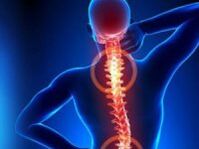
- Start the process with light, gentle movements on the problem area. It is better not to take extra tools, the effect of palms and fingers will be sufficient.
- After rubbing, the effect will increase on the area. You can grab the folds of skin with your fingers and squeeze them lightly.
- Muscle and soft tissue stirring should occur in the paravertebral area, making it impossible to affect the ridge itself. Movement can be tapping, circling, pressing.
- To end a session, you need to tap, vibrate, caress.
Self-massage in the back can be done every day even without special knowledge and skills. Effects on the muscles of the chest, hips, shoulders, lower back, have a good effect on the treatment of osteochondrosis in general.
In addition to massage, therapeutic baths help to overcome the disease. They are contraindicated during periods of exacerbation, but become indispensable in the degree of remission. Proper and regular exercise allows you to increase blood flow, relax muscles, improve mood and well-being. Only warm water can be used in the process (hot water will only harm), to which is added a decoction of medicinal herbs. Thyme, string, thyme, lemon balm, chamomile have proven themselves well. Take medicine 20 minutes before bed.
Simple exercises are useful for the spine with cartilage dysfunction. Doctors choose them for each patient individually, taking into account general condition, physical fitness, age. It is done daily and is part of the therapy. The simplest activity resembles school training, but one should not underestimate its importance for the body during the treatment period. They aim to warm up the muscles, improve blood circulation, stretch and stretch the muscles where there are blocks.
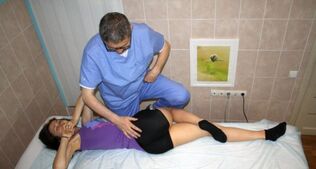
During implementation, you should follow these suggestions:
- Do not exercise quickly, putting a lot of pressure on the bones and muscles.
- Everything is done smoothly, wisely, with sensational control in the body.
- The class stops completely if the patient feels sick, unable to straighten.
- Strength complexes are often replaced by breathing exercises until the tissues receive a sufficient amount of oxygen.
- Classes can only be done in well-ventilated rooms or outdoors.
Keep in mind that the attending physician gives training, some effects on the spine are dangerous in the event of a disease such as osteoporosis. They can cause serious complications. Exercise therapy is an excellent tool to combat pathology in the back and is often used to prevent a number of problems with increased risk. The complex includes exercises from yoga or oriental techniques. You need to do this regularly, at least 3 times a week.
Physiotherapy for osteochondrosis is used in addition to the main treatment, the patient's condition improves. Physiotherapy procedures act directly on the painful focus, so no side effects will arise.
- The body's metabolism is getting normal.
- The condition of tissues and organs improves.
- Immunity increases and becomes more resistant.
- The pain is relieved.
- Good anti-inflammatory and anti-edema effect.
Specialists often prescribe combination physiotherapy. For example, if the pain is severe, electrophoresis and diadynamic therapy are used, with mandatory use of novocaine.
To simultaneously affect biologically active points, acupuncture-reflexolaser-puncture is used. Tissues are affected by laser radiation and needles. Along with electrotherapy, mud therapy is used.
Sort
- During periods when there is no pain, at that point, movement will not cause pain.
- At a bad time.
Before the specialist begins this procedure, the patient is ready. To do this, you need to bend your back for about 3-5 minutes, first stroking the shoulder blade area, then closer to the neck and shoulder belt. After this, the rubbing should be replaced by kneading and shaking. At this stage, the preparation will be completed, you can proceed to the massage procedure.
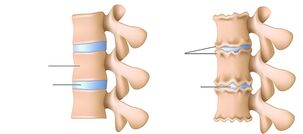
Massage for osteochondrosis can trigger severe pain. But if the body is properly prepared and relaxed, then this can be avoided.
If you feel uncomfortable after the first procedure, you do not have to worry, on the third day the pain will subside, and the procedure itself will be more pleasant.
The patient must be placed on a flat surface in a horizontal position. If the massage is performed only on the neck area, then the patient should sit.
There is another way to treat osteochondrosis with folk remedies - medical herbal baths. Baths can be used not only for cleansing purposes, but also for healing purposes, selecting the appropriate medicinal ingredients and their quantities. Bathing, like other alternative methods of treating osteochondrosis, should be taken only after you see a doctor. In some forms of osteochondrosis, they may be contraindicated.
To treat osteochondrosis of the spine with the help of a bath, you need to know some recipes for proper preparation:
- Bath with birch leaves. To cook, you need to mix birch leaves. The bathing procedure should take about half an hour. The water must be slightly hot.
- Chestnut bath. To prepare, crush the chestnuts and boil for 15 minutes. Then pour into the bathtub and take for about 20 minutes.
- Bathing the needle. You need to collect a few needles from a tree in the woods, boil for about 20 minutes. Then pour the broth into the bathtub and take for about 25 minutes.
- Camomile bath. It is necessary to pour boiling water over the chamomile and let the broth boil for half an hour. Then you can filter the medicine and take a shower.
- Jerusalem artichoke bath. You need to fill a bucket with a capacity of 10 liters of stalks and leaves of Jerusalem artichoke, pour boiling water over it, wait 20 minutes. Pour the liquid into the bathtub. The bathing procedure takes 15 minutes.
For more effective treatment of osteochondrosis of the spine, the duration of treatment is around a week. Bath has a calming and soothing effect, relieving cramps and relieving pain. Home treatment like this is not only beneficial but also pleasant.
How to cure cervical osteochondrosis at home
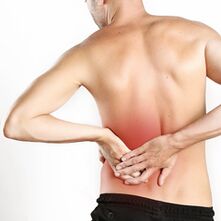
There are several reasons for the onset and progression of the disease. Some of the most common:
- hereditary tendencies;
- posture disorders;
- age;
- past spinal injuries;
- heavy loads, including hard labor and physical sports;
- previous infectious diseases;
- wear uncomfortable shoes or high heels;
- Unhealthy diet, including excessive addiction to snacks.
In addition, excess weight, frequent stress, unstable lifestyle and even severe hypothermia can contribute to the occurrence of osteochondrosis.
Causes of osteochondrosis can be hypothermia, tilt or sharp rotation, vigorous physical activity.
Experts believe that the leading cause of osteochondrosis is incorrect division of load on the spinal space. As a result, in areas where there is excessive physical stress, there are complete or partial changes in cartilage tissue.
- Curved spine.
- Patients remain silent while sitting or walking.
- Weak back muscles.
- A person leads a sedentary, slightly sedentary lifestyle.
- There is a lack of calcium, magnesium, phosphorus in the body.
- Hereditary factors.
- Past infectious diseases.
- Severe nervous tension, depression.
- Hormones are disrupted.
- Injuries to the spine, it can occur during a fall, and be hit.
- The position of the trunk changes frequently and suddenly.
Lifting at right angles to the trunk can cause intervertebral disc proliferation. That is why a large load should be taken only while squatting, therefore, the spine will be protected.
Treatment of osteochondrosis of the cervical spine includes a variety of methods and techniques aimed at relieving pain and combating inflammatory processes in tissues. An effective method is daily exercise for spinal flexibility. As a rule, individual training programs are selected by the physician after diagnostics using MRI or computed tomography and assessment of the stage of the disease. Let's see how osteochondrosis of the cervical spine is treated.
Drug therapy has been prescribed at the first signs of cervical osteochondrosis. If the first pain can be relieved with regular pain pills, then later will not be able to help anymore. Medical treatment of cervical osteochondrosis is carried out with a new generation of chondroprotectors - drugs that stimulate the recovery of cartilage tissue in the spine.
But if you need to relieve acute pain in cervical osteochondrosis, your doctor will prescribe novocaine blockers or non-steroidal anti-inflammatory drugs. These are ointments, capsules, tablets and injections that quickly improve the general condition of the patient. But if chondroprotectors do not have contraindications even with prolonged use, NSAIDs have serious side effects, so their use must be agreed with the attending physician.
To quickly anesthetize the cervical spine in the event of osteochondrosis, a special gel or ointment, which begins to act 10 minutes after application, will help. There are several types of it:
- Regenerates, making it possible to restore damaged cartilage tissue between the vertebrae.
- Anti-inflammatory, based on non-steroidal substances, relieves pain.
- Pain relievers that affect nerve endings, quickly relieve pain.
- Massage ointment.
Manual therapy
The oldest method, but no less effective than modern methods of treating osteochondrosis, is manual therapy. Experts have developed many techniques that have a beneficial effect on the spine, tissues and joints in the affected area. Only a chiropractor should be a good specialist in his field, so as not to take the patient to a wheelchair. The main methods of manual therapy for cervical spine osteochondrosis are:
- segmental massage that relieves muscle tension;
- manipulation aimed at restoring joint working ability, accompanied by cramps;
- mobilization, restoring damaged joints by stretching them.































